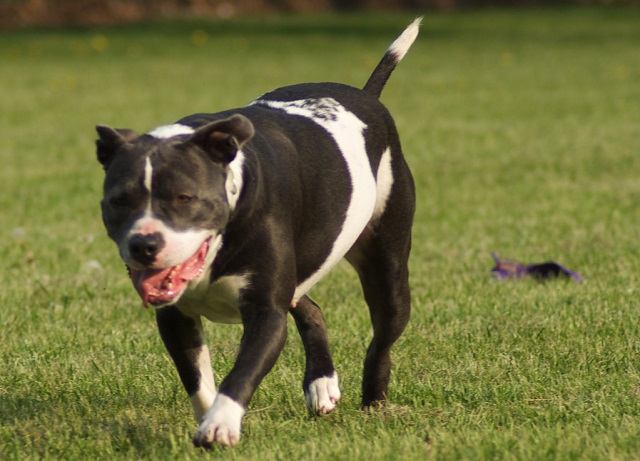Food is one way we express love to our dogs. We love to watch them get excited about a heaping serving at mealtime and we enjoy seeing them get excited over between-meal treats. Just like with humans, though, we have to be careful to give our dogs the right balance of food and activity to stay healthy. We wonder if our dogs are too skinny, too heavy, or way over the mark when it comes to weight.

The Problem with Excess Weight
According to VCA, as few as five extra pounds of weight can put your pup at risk for a host of health complications. The reality is that any amount of excess weight will lead to a secondary condition. It is merely a question of when and how serious the condition will be.
Being overweight or obese can lead to these and other problems:
- type 2 diabetes
- heart disease
- osteoarthritis (arthritis)
- increased frequency of joint injuries
- high blood pressure
- some forms of cancer – especially intra-abdominal cancers
On top of that, overweight dogs have less energy so they interact with their humans less. Less play, less motivation and capacity to exercise, and health complications become a cycle, making the situation worse and worse for your dog. Ultimately, it means a shorter, less happy life. And what does that mean for us? Maintaining a healthy weight is incredibly important over the entire course of a dog’s life.
Weight Charts
Determining a dog’s healthy weight is not as easy as looking at a chart of average age and breed weights (though that can give you a place to start). As a rule of thumb, a dog at a healthy weight should have a visible waist when you look at them from the side and from above, though we encourage you to talk to your veterinarian when determining an exact number. To give you some quick direction, here are some common weights by breeds, provided by Nom Nom:


Body Condition Score
As a rule of thumb, a dog at a healthy weight should have a visible waist when you look at them from the side and from above. The belly should be tucked in when viewing from the side and you should see it curving in from your viewpoint above.
To fine-tune the scale, you need to assess your pet’s Body Condition Score. Vets typically use a Body Condition Score to evaluate your pets’ weight and set goals for moving forward. They are sometimes organized with 5 points and other times with 9 points. Below is a 9-point example from the VCA.
1 Emaciated: Ribs, backbone, and pelvic bones stick out. Loss of muscle mass present. Severe tummy tuck and dramatic waistline on both cats and dogs.
2 Very Thin: Ribs and backbone and pelvic bones visible, but only minor loss of muscle mass. Severe waistline and tummy tuck.
3 Thin: Ribs, pelvis, backbone easily palpated and somewhat visible. Severe waistline and tummy tuck.
4 Underweight: Ribs, pelvis, backbone easily palpated but not as visible. Obvious waistline and tummy tuck.
5 Ideal Weight: Ribs, pelvis and backbone palpable with a thin layer of fat covering. Waistline and tummy tuck obvious but not severe with more gradual curves.
6 Overweight: Slight fat layer over ribs, backbone and pelvis making them more difficult to palpate. Tummy tuck present but minimal. Waistline visible, but not prominent.
7 Heavy: Ribs covered with heavy fat layer requiring finger pressure to feel. Difficult to feel backbone or pelvis. Waistline not apparent. Tummy tuck still slightly visible.
8 Obese: Ribs, pelvis and backbone covered with thick fat layer and palpable only with extreme pressure. No tummy tuck or waistline.
9 Severely Obese: Ribs and backbone not palpable under thick fat layer. Abdominal distention projects downward (opposite of tummy tuck) and outward (protruding waistline). Fat deposits on legs, face and over tail head covering pelvis.
Dr. Justin Shmalberg, DVM is the Veterinary Nutritionist at Nom Nom. He put together this easy-to-follow guide to determine if your dog is within a healthy weight range using both the waistline check and the Body Condition Score.
Move the Scale with Individualized Meals
Now that you know how to check your dog’s weight with some authority, have you discovered that your dog falls outside of that healthy weight target? If your dog is not within a healthy weight range, food is likely a big part of the problem. Fresh, perfectly portioned meals designed with your dog’s unique weight goals in mind could be the solution.
There is no better time than now to get your dog’s weight in order. Nom Nom is extending a special offer, just for our iHeartDogs community. Take advantage today and help get your dog’s weight on track. Take 50% Off Plus Receive Free Shipping On Your First Order of Nom Nom!
 Toledo, United States.
Toledo, United States.
